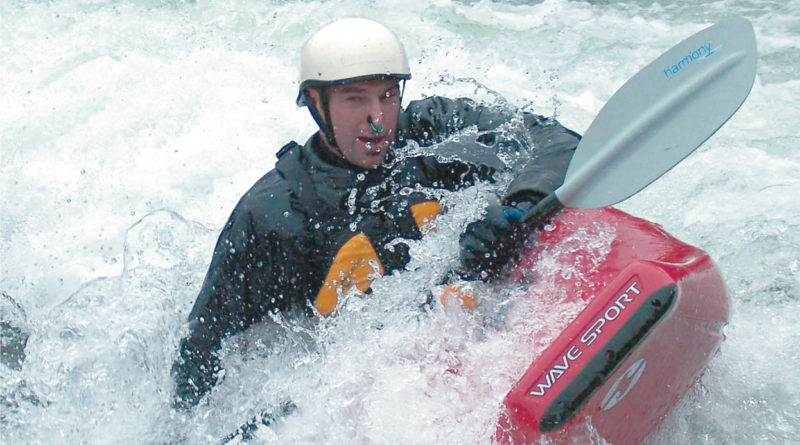Cold-water kayaking 101: Eight suggestions to stay safe during the spring surge
The elements that make springtime kayaking in the region so popular are also what make it so dangerous.
As snow melts and spring rains increase, waterways swell to their highest levels of the year. Higher water means faster water, and an increase in exciting rapids.
“Around here, on big rivers like the Susquehanna, run off might not be as big of a problem because the depth and width of the river allows for slower water movement, but creeks will absolutely be faster and deeper, which can make it dangerous for beginner kayakers,” said longtime kayak enthusiast Meghan Delsite, from Sunbury.
“Cold water isn’t for the inexperienced, so make sure that you know what you’re doing. The water is going to be a little faster, and inexperienced paddlers often underestimate just how cold the water is and what cold water can do to their bodies.”
Consider the following tips when tackling the area’s many creeks, lakes or the Susquehanna River.
1. Wear your PFD (personal floatation device).
New state laws require that PFDs be worn between the months of November and April, according to Nelson Wenger of Penns Creek Kayak rentals.
“For a long time, the law suggested you needed to have a life jacket along with you in the boat,” he said. “Now it is mandatory to be worn when boating on colder water.”
And be sure to wear it correctly, suggested Betsy Quant, of Canoe Susquehanna.
“Make sure it fits well and actually take the time to buckle it,” she said. “We used to not make a big deal about it if we know the person can swim well, but there are just too many things that can happen, even for the best of swimmers.”
Also, a newer Pennsylvania law requires kayakers to have a whistle or other loud noisemaking device on them in case of emergency.
2. If you aren’t experienced, practice first on still water.
“For first-timers, I usually recommend starting out on something calm,” said Wenger. “Don’t do rapids on the first outing.”
Finding such waterways isn’t hard in the central part of Pennsylvania.
“The predictable current of a lake or pond is easily found throughout the Valley, specifically on Walker Lake (in Snyder County), Lake Chillisquaque at the Montour Preserve (near Danville), the Central Pennsylvania Wesleyan Campground (near New Columbia) and the game lands near Allenwood,” said longtime kayaker John Zangari-Ryan, of Lewisburg. “For anyone looking to get in a boat and not be worried about a faraway shoreline or the brutal strength of a current, any of these four locations is ideal.”
3. Find a decent guide unless you know what you are doing.
“In Pennsylvania, there is no test to pass to become a kayaking guide. Anyone can put out a sign and call themselves a guide,” said Quant. “Good guides make kayaking fun and teach you things you didn’t already know — even if you’ve kayaked before.”
4. Watch out for debris.
“Be wary of strainers, which are things like logs fallen across the creek, debris build-up or natural dams,” said Delsite. “In the winter, they can freeze fast. If you hit them (which you should not do anyway), you can seriously damage the boat or injure yourself.”
5. Don’t paddle impaired.
“In my family, the rule of thumb is that if alcohol comes out, we are done on the road and done on the river,” said Quant. “Alcohol and drugs — even certain prescription drugs — can impair someone and you don’t want to be impaired when in the kayak.”
6. If the water is cold, wear a wetsuit.
“One important thing to note is that you really need to wear a wetsuit in cold weather. People don’t realize how quickly they can get hypothermia if they fall in the water, even if they get out quickly, because their clothing will stay wet and can freeze to their bodies,” said Delsite. “A wetsuit serves as insulation and though it won’t serve as the end-all-be-all in protection, you’ll stay a lot drier and a lot warmer.”
A general rule of thumb is that in water 60 degrees and up, dress appropriately for the water. Moderate hypothermia risk comes in water between 55 and 59 degrees, and a wetsuit is recommended. In water temperatures 45-54 degrees, hypothermia risk is considered high and a dry suit is suggested. In water below 45 degrees, there is a extreme risk of hypothermia and a dry suit is almost mandatory.
7. Use the buddy system.
“Especially for beginners, but really for any skill level, it is a good idea to kayak with a friend or family member,” said Wenger. “Don’t be out there by yourself — you are just asking for trouble.”
Zangari-Ryan agreed.
“Novices should certainly adventure on waters with friends for safety, but also in order to share, test and judge a variety of boats,” he said. “This testing is essential to distinguish which shape and size is ideal for each individual.”
8. Bring sufficient water and food.
“People underestimate how thirsty they get when exercising, especially when out in the sun,” said Quant. “You need more food and water when you are out moving.”

